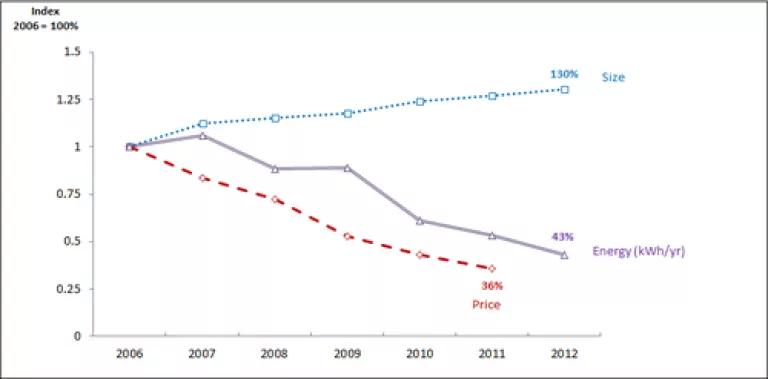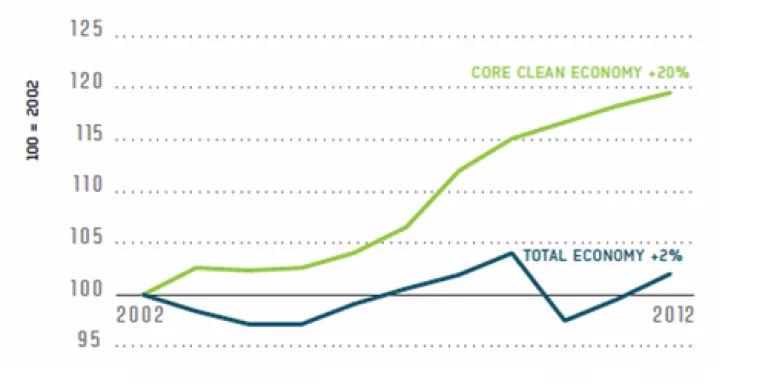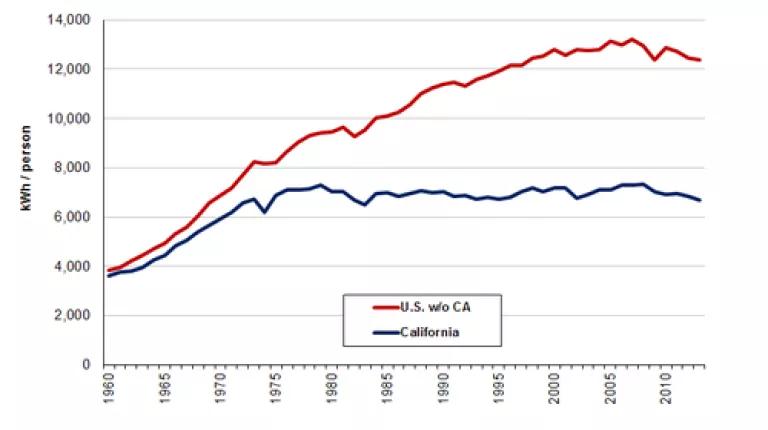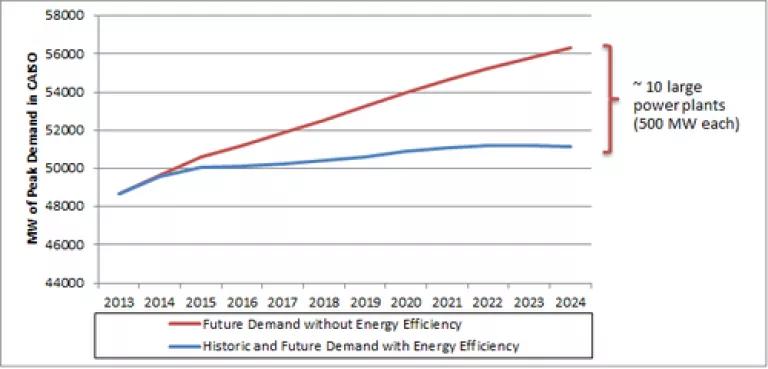5 FACTS: How California Energy Efficiency Policies Save Money, Invigorate the Economy, and Clean Our Air

Have you ever wondered why there's so much hype about energy efficiency? Or why naysayers spread myths to try to undermine California’s four decades of efficiency success and climate leadership? Here are five facts proving that using energy smarter is great for your wallet, health, and California’s economy.
FACT 1: Efficiency lowers the cost of energy services
Bills are what Californians care about: Although we hear periodically that California has some of America’s highest electricity rates, that’s only half the story because California’s average residential bills — how much we pay to our electric utilities — are substantially lower than the rest of the country.
California’s Electricity Bills Are Among the Very Lowest in the Country
Credit: Energy Information Administration
Moreover, Californians spend $20 less every month than the rest of the United States (or $40 below Texas) and can use that money for necessities like health care and food or for fun. (See here for more on the rates vs. bills issue.)
Setting minimum efficiency levels saves customers money: Requiring a minimum level of efficiency for buildings and appliances has spurred innovation while giving us what we want at a lower cost. For example, the size of TVs continued to grow after enactment of a television efficiency standard, but their energy use — and prices — dropped.
Larger TVs Now Cost Less to Buy and Use

Credit: NRDC Analysis
FACT 2: Efficiency spurs the economy and leads to job growth
California gets more economic activity from every unit of energy used: Although naysayers claim otherwise, the state’s smart efficiency efforts contribute to California remaining twice as productive as other states. That means our businesses produce twice as many products and services while using the same amount of energy.
California’s Economy is Highly Productive

Credit: Next 10, 2014
If California were as inefficient as Texas or Florida, the state’s collective annual electricity bill would be nearly $10 billion or $25 billion higher, respectively.
Clean energy policies spur job growth in a clean economy: Next 10’s annual “Green Innovation Index” shows once again that climate policy and a healthy economy can — and do—- go together. In particular, jobs in California’s “core clean economy” grew 10 times faster than the total state economy. For more great stats, go here.
Efficiency Supports Job Growth

Credit: Next 10, 2014
Efficiency efforts create jobs outside the energy industry: Efficiency also helps job growth outside of the energy sector. Having more money in our pockets thanks to lower energy bills means we can spend it in restaurants and other labor-intensive services. Reinvesting utility bill savings into these areas creates 50 jobs for each one lost in the fossil fuel sector, according to Energy Efficiency, Innovation and Job Creation in California. The report also shows Californians saved nearly $60 billion because of efficiency efforts from 1972-2006, allowing that spending to go toward other goods and services, creating 1.5 million full-time equivalent jobs with a $45 billion payroll.
FACT 3: Efficiency helps Californians at all income levels
Minimum efficiency appliance standards and building codes save money for everyone as these products optimize energy use and therefore lower utility bills. There are also voluntary efficiency programs (like weatherization and appliance rebates) that are specifically designed for all income levels, including offerings for middle income and low income customers.
These efforts have saved Californians tens of billions of dollars since the 1970s. Since 2006 alone, programs delivered by private and public utilities, third parties, local governments, and trade allies have saved customers nearly $12 billion after accounting for the cost of the programs. In other words, utility customers paid $12 billion LESS on energy services than they would have without efficiency.
Efficiency Saves Utility Customers Money

Credit: California Public Utilities Commission and California Municipal Utilities Association
FACT 4: Efficiency helps keep per capita electricity use flat and lowers demand for future energy
California’s per capita electricity use continues to be flat: This is not a new story for California, but is one that should continue to be celebrated. The state’s smart efficiency policies have contributed at least a third of this effect and continue to show California as a leader.
California Continues Flat Per Capita Electricity Use

Credit: EIA, U.S. Census Bureau
Efficiency helps flatten total demand: What’s even cooler is that efficiency is now flattening absolute demand by “using” efficiency to power our homes and businesses. That is, utilities are considering efficiency as a source of energy to serve customers instead of natural gas or hydropower.
Efficiency Reduces Overall Demand

Credit: California Energy Commission
In fact, “using less electricity” (aka efficiency) will help meet almost one-fifth of California’s expected annual energy need and avoid 10 power plants (as well as lower costs and pollution). See here for more on how the state has kept per capita energy use flat and here for how we are flattening demand.
FACT 5: Efficiency cleans our air
Last but not least, efficiency reduces all kinds of pollutants that are spewed from dirty fossil fuel-fired power plants, often located in low-income communities. Over the past eight years alone, efficiency reduced as much carbon dioxide as emitted by nearly 3 million cars. Efficiency is also a crucial strategy to meet California’s greenhouse gas emission reduction targets for 2020 and beyond.
Efficiency Plays an Important Role in California’s Climate Strategy

Credit: James H. Williams, Science
What’s next?
California’s record of success with efficiency policies is clear and spans decades of bipartisan leadership. This effort has relied on a highly coordinated effort between state agencies, market players, and utilities to bring new efficient technologies to consumers. The facts show there have been substantial benefits to all Californians.
But California can — and should — continue to do more to scale up efficiency, including properly valuing efficiency in energy planning; pushing the utilities, local governments, and third parties to do more with voluntary efficiency programs; and ensuring that the California Energy Commission continues to set stringent codes and standards.
California has the right stuff to capture all the benefits efficiency has to offer. And that’s a fact.

